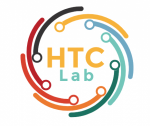As AI chatbots become increasingly integrated in education, students are turning to these systems for guidance, feedback, and information. However, the anthropomorphic characteristics of these chatbots create ambiguity regarding whether students develop trust toward them as they would a human peer or instructor, based in interpersonal trust, or as they would any other piece of technology, based in technology trust. This ambiguity presents theoretical challenges, as interpersonal trust models may inappropriately ascribe human intentionality and morality to AI, while technology trust models were developed for non-social technologies, leaving their applicability to anthropomorphic systems unclear. To address this gap, we investigate how human-like and system-like trusting beliefs comparatively influence students’ perceived enjoyment, trusting intention, behavioral intention to use, and perceived usefulness of an AI chatbot – factors associated with students’ engagement and learning outcomes. Through partial least squares structural equation modeling, we found that human-like and system-like trust significantly influenced student perceptions, with varied effects. Human-like trust more strongly predicted trusting intention, while system-like trust better predicted behavioral intention and perceived usefulness. Both had similar effects on perceived enjoyment. Given the partial explanatory power of each type of trust, we propose that students develop a distinct form of trust with AI chatbots (human-AI trust) that differs from human-human and human-technology models of trust. Our findings highlight the need for new theoretical frameworks specific to human-AI trust and offer practical insights for fostering appropriately calibrated trust, which is critical for the effective adoption and pedagogical impact of AI in education.
- How to science a science with science - July 4, 2025
- How we (Anthropic) built our multi-agent research system - July 1, 2025
- Automatic Large Language Models Creation of Interactive Learning Lessons - June 29, 2025
